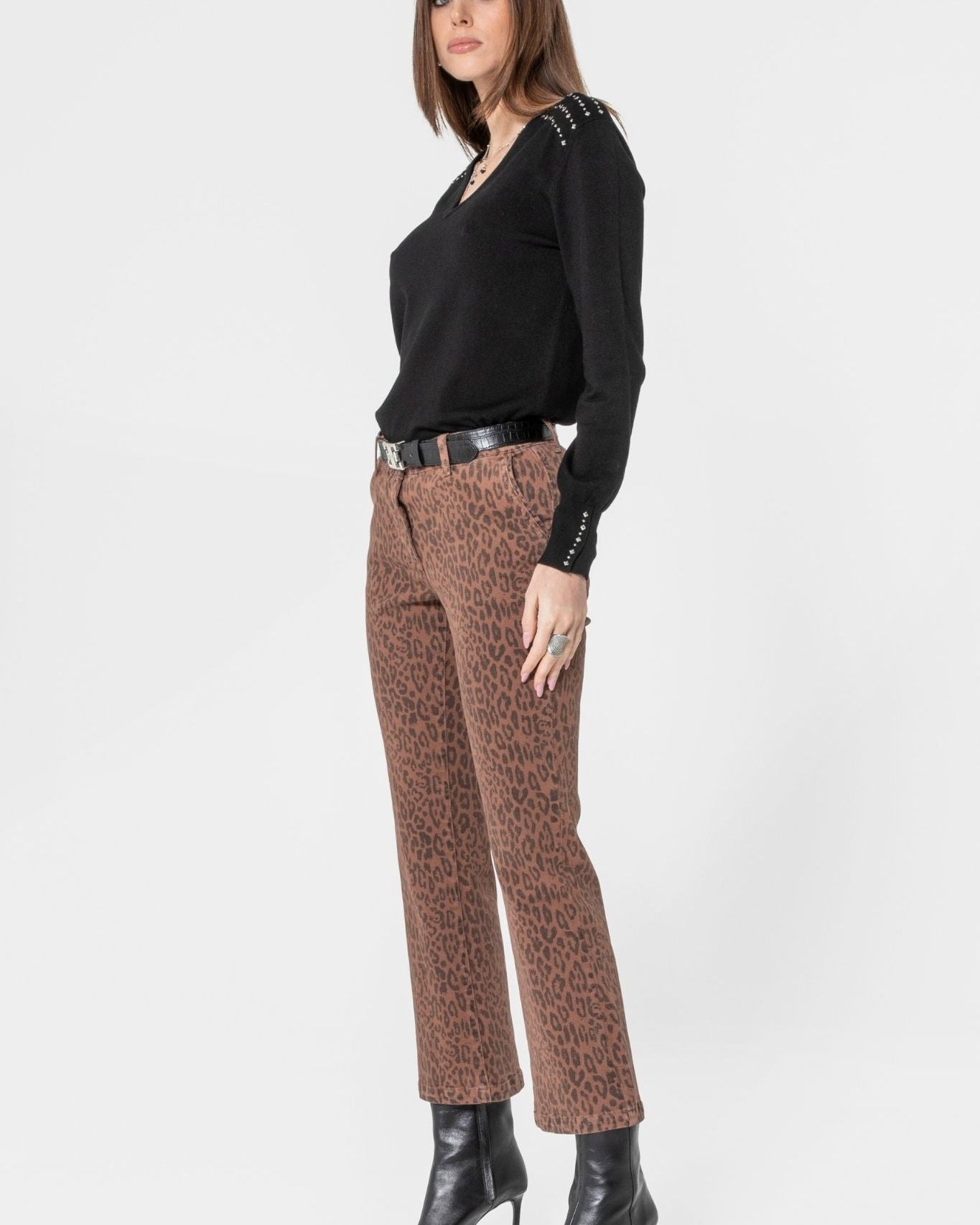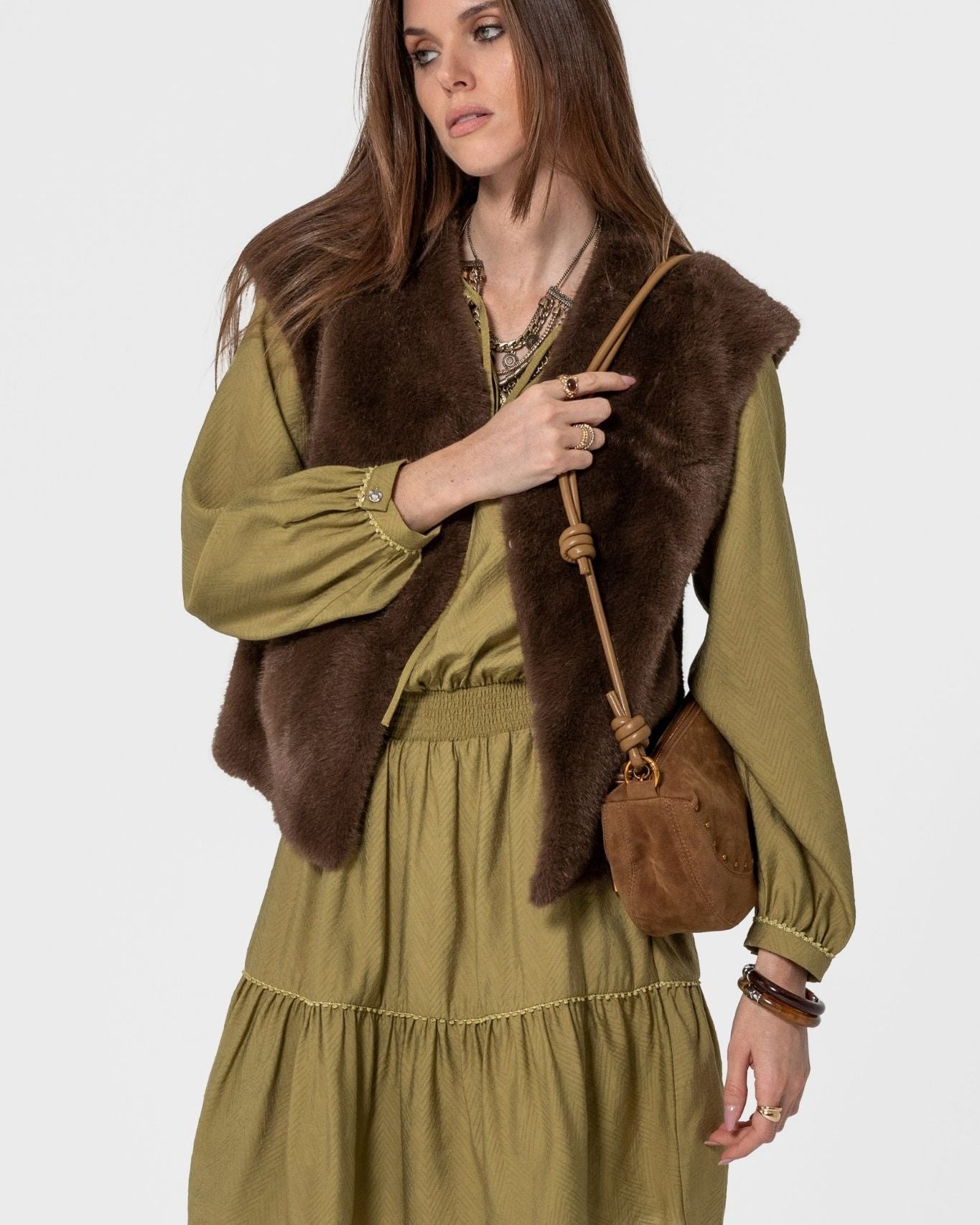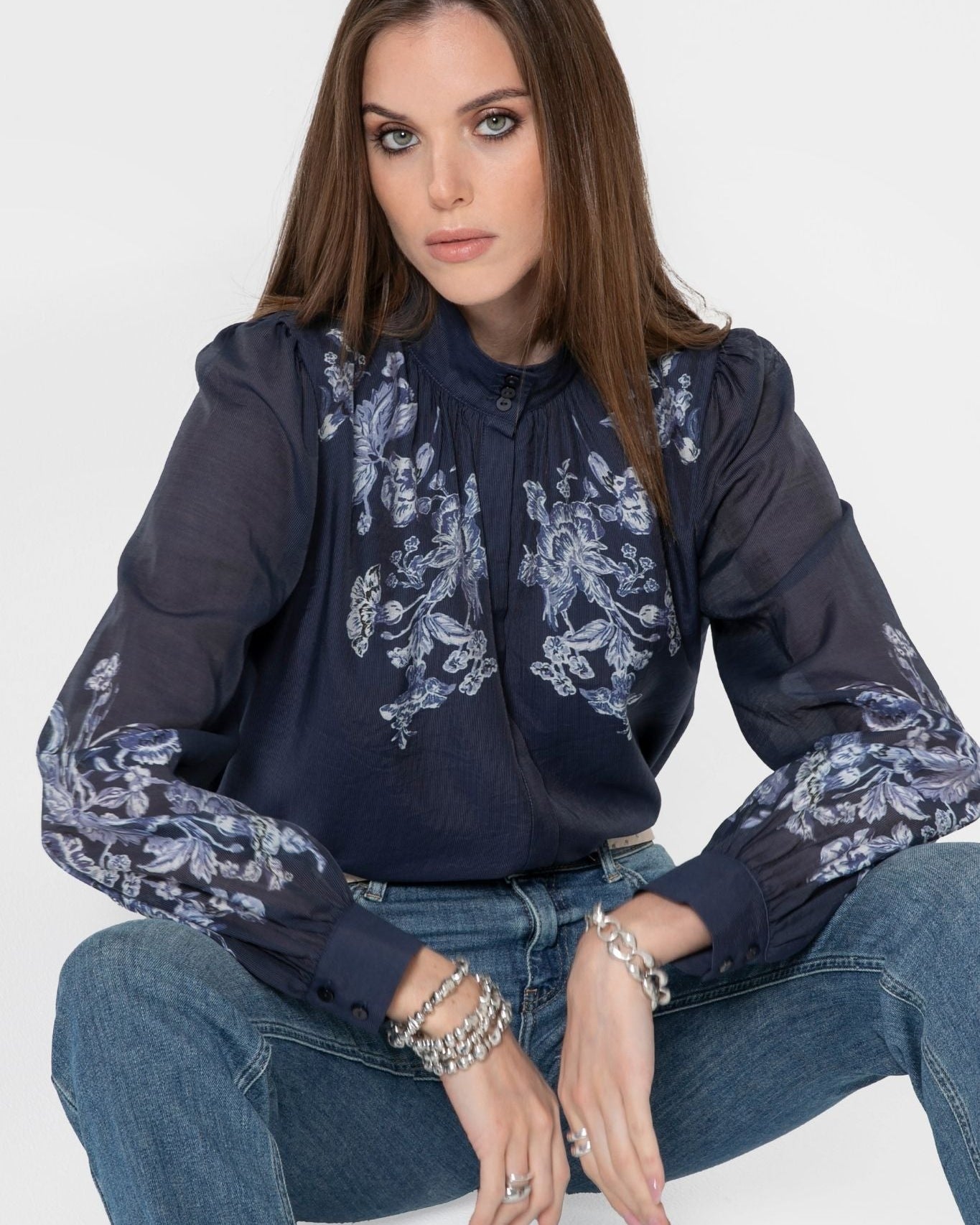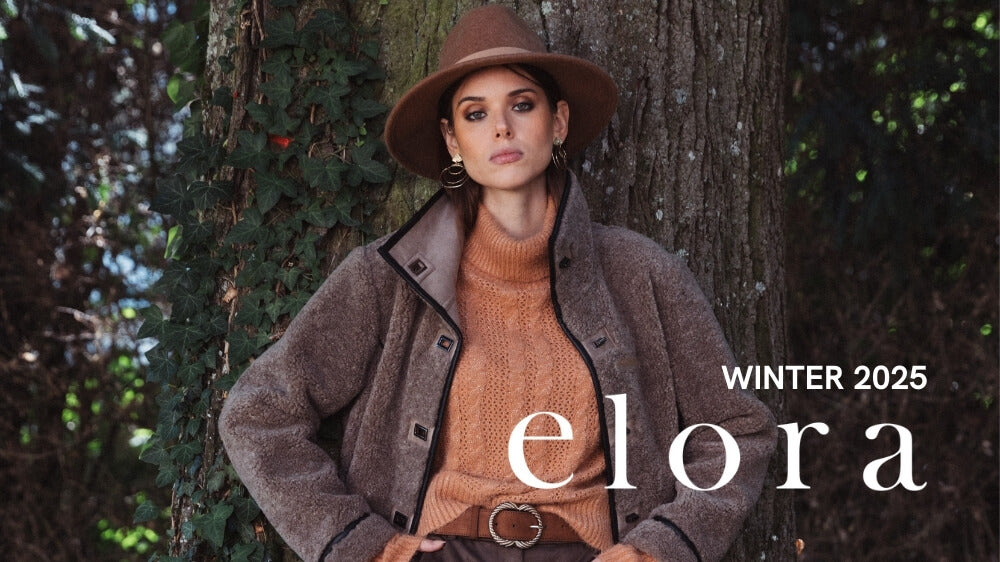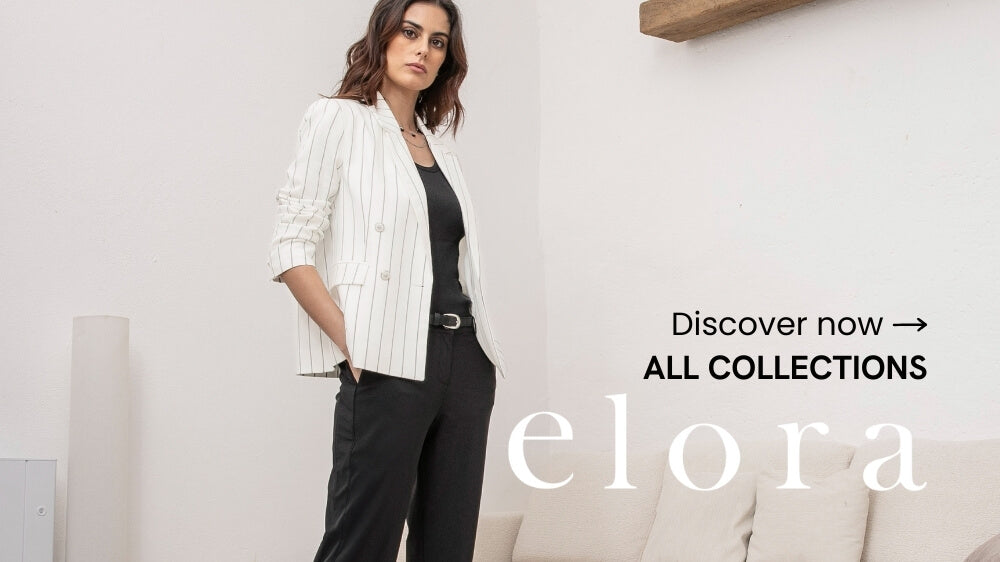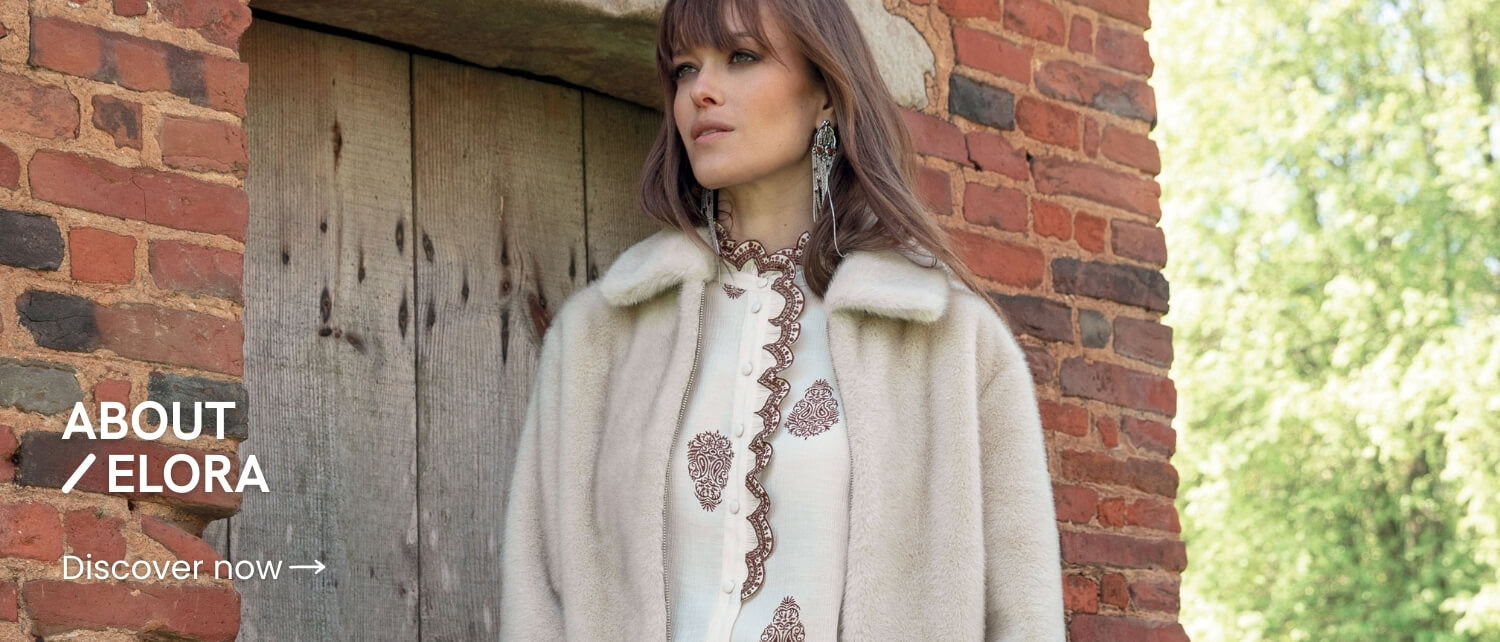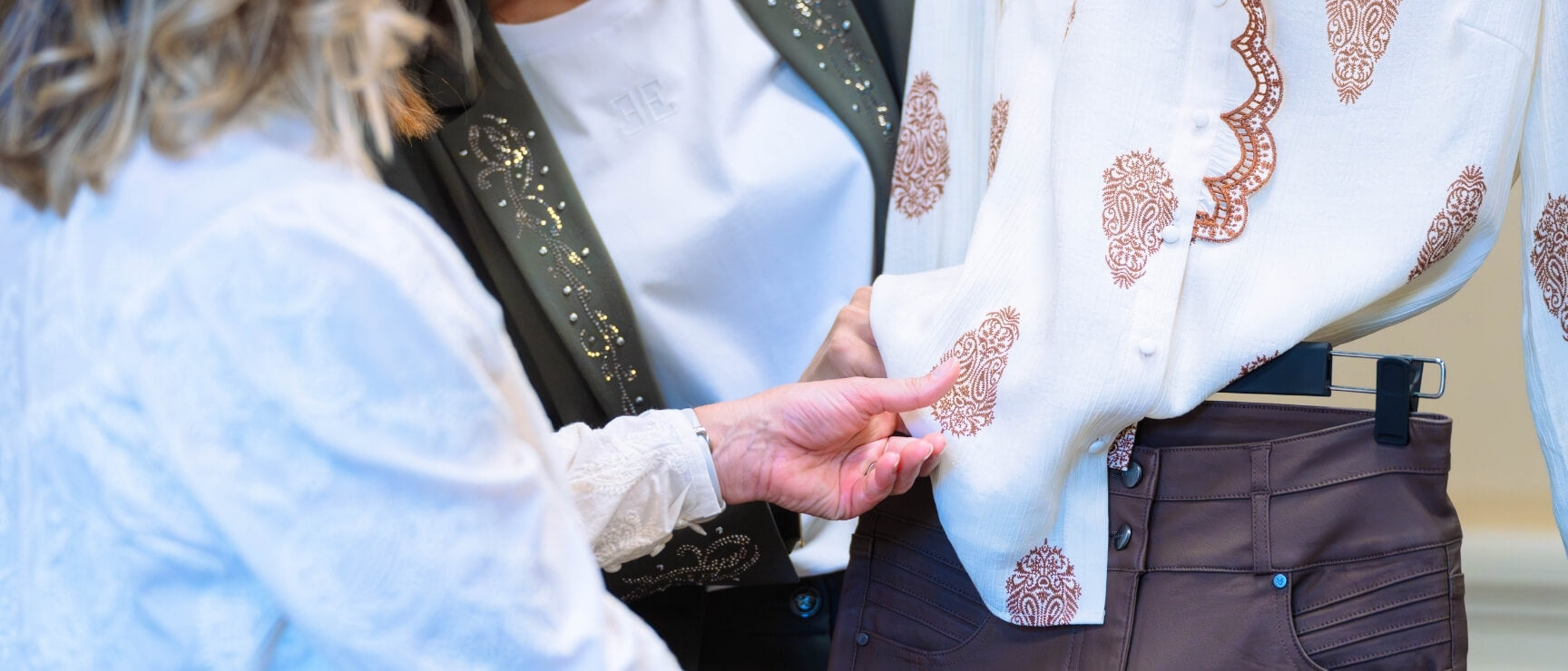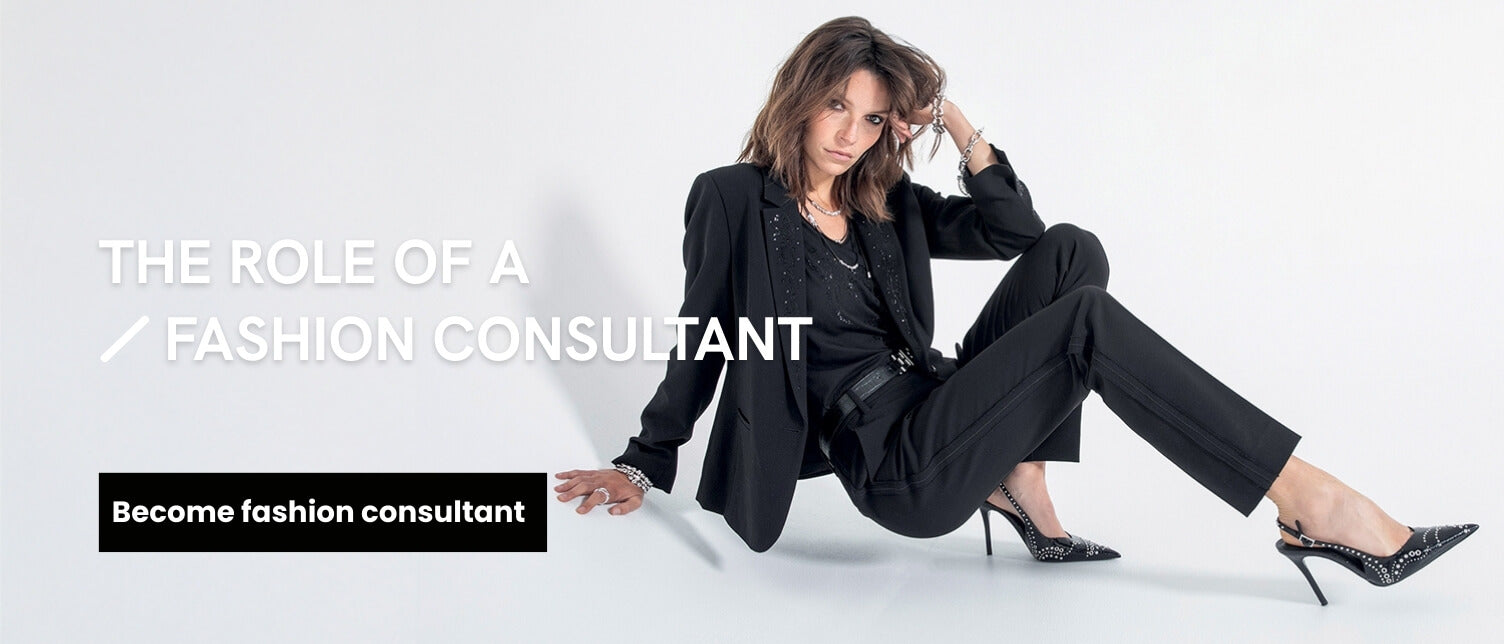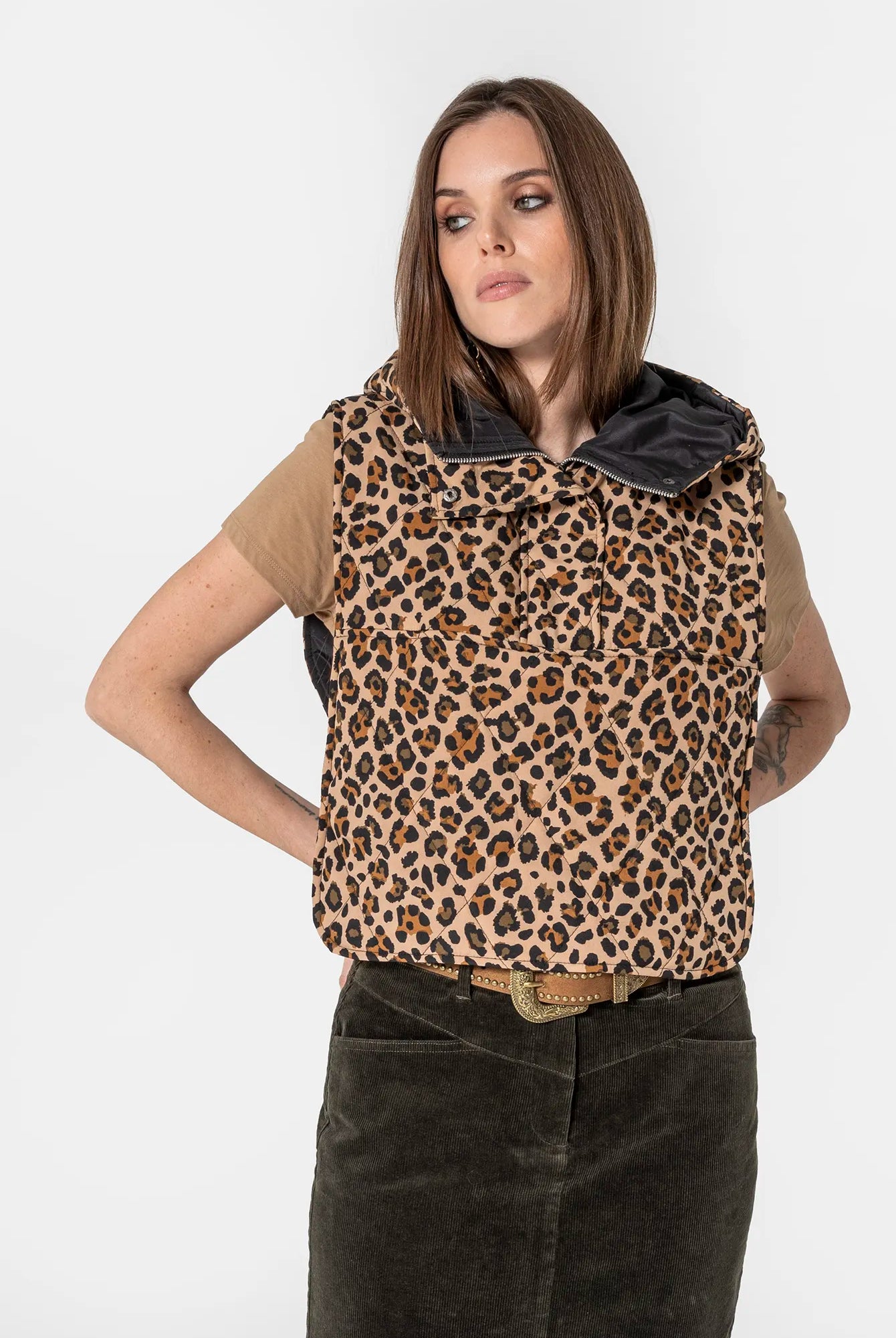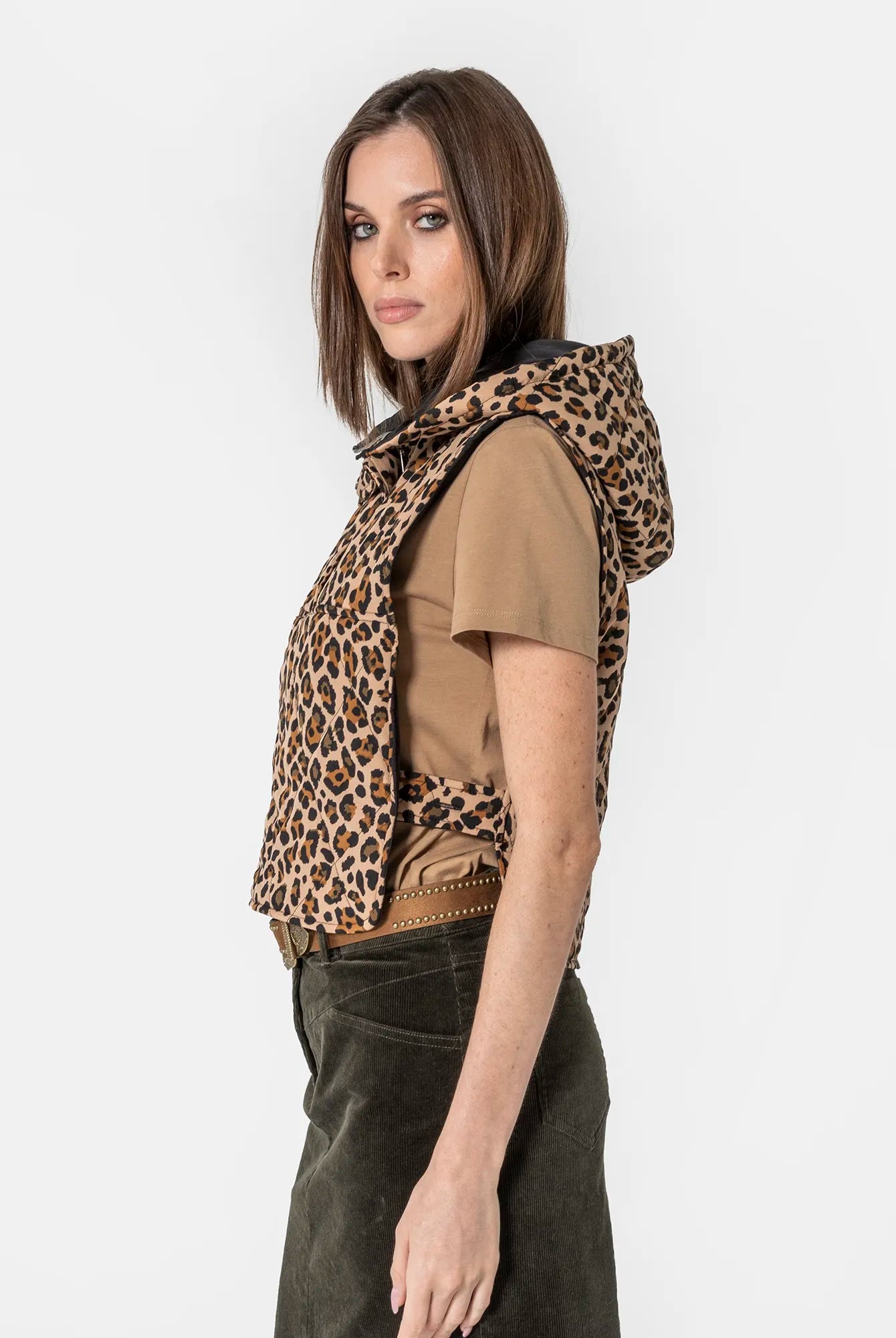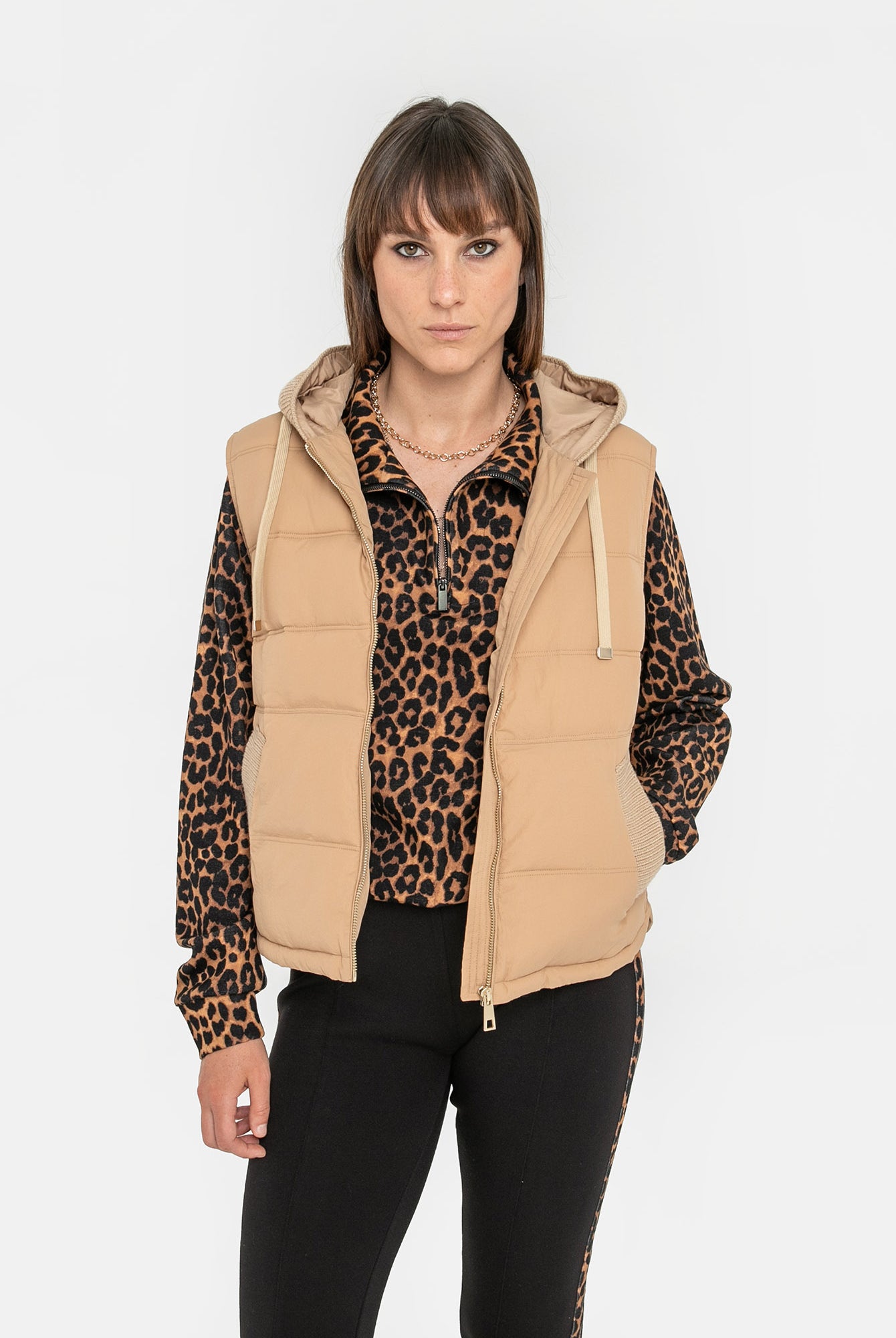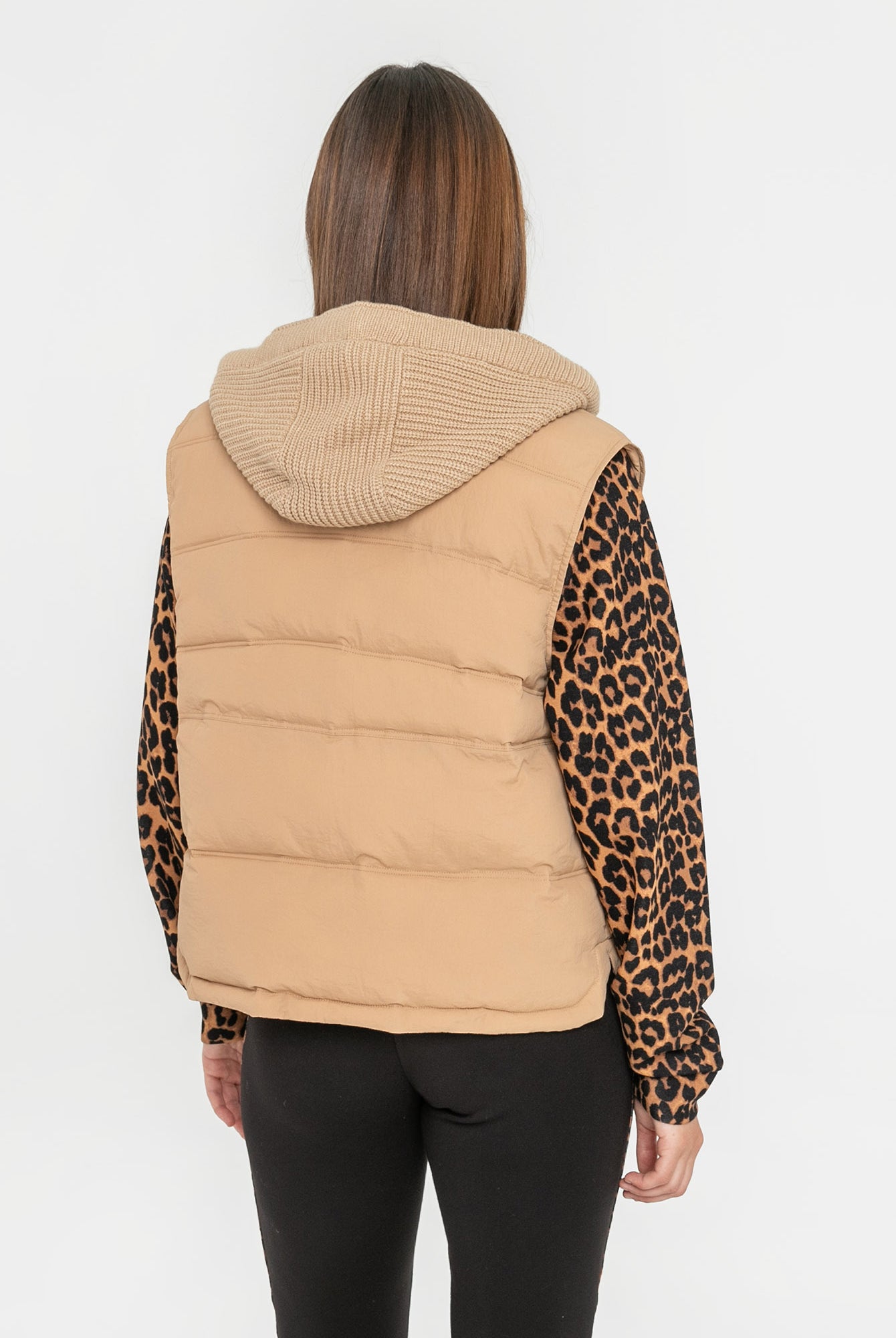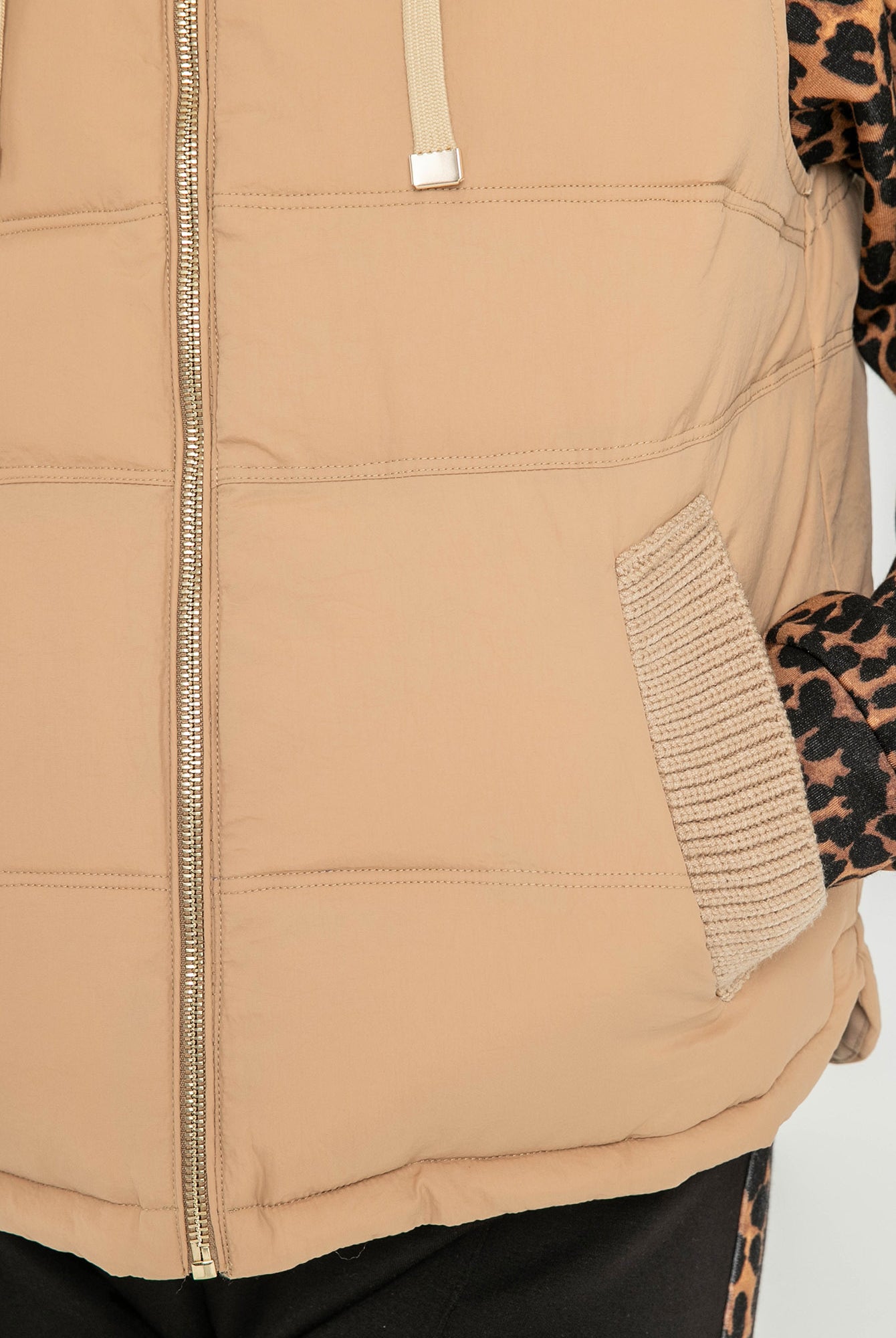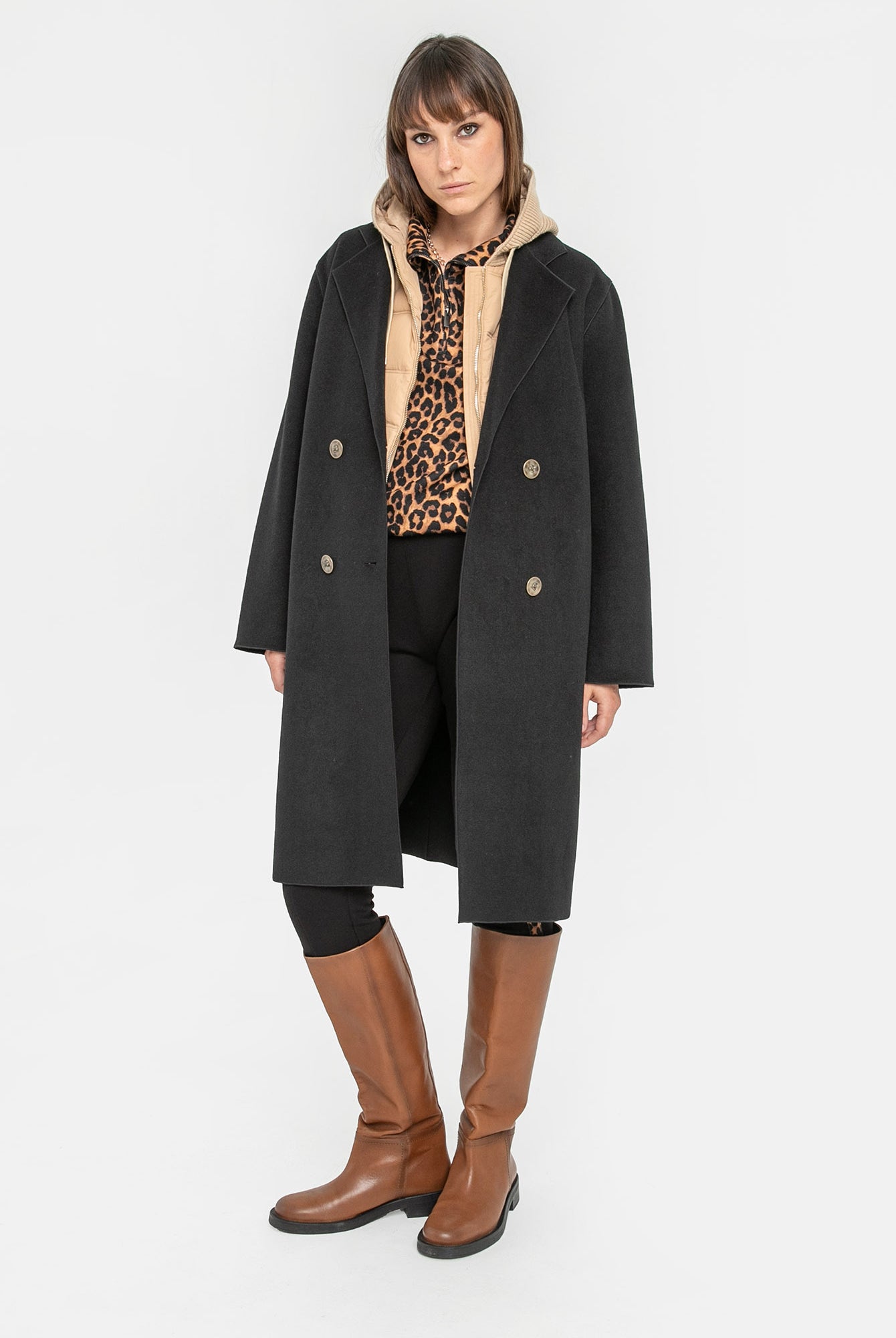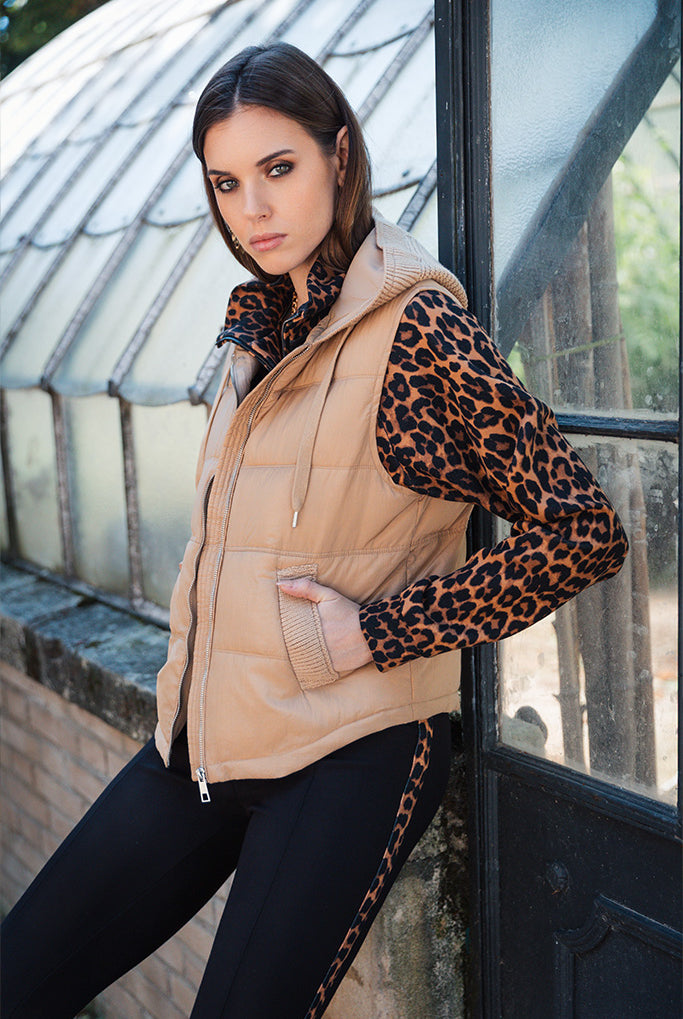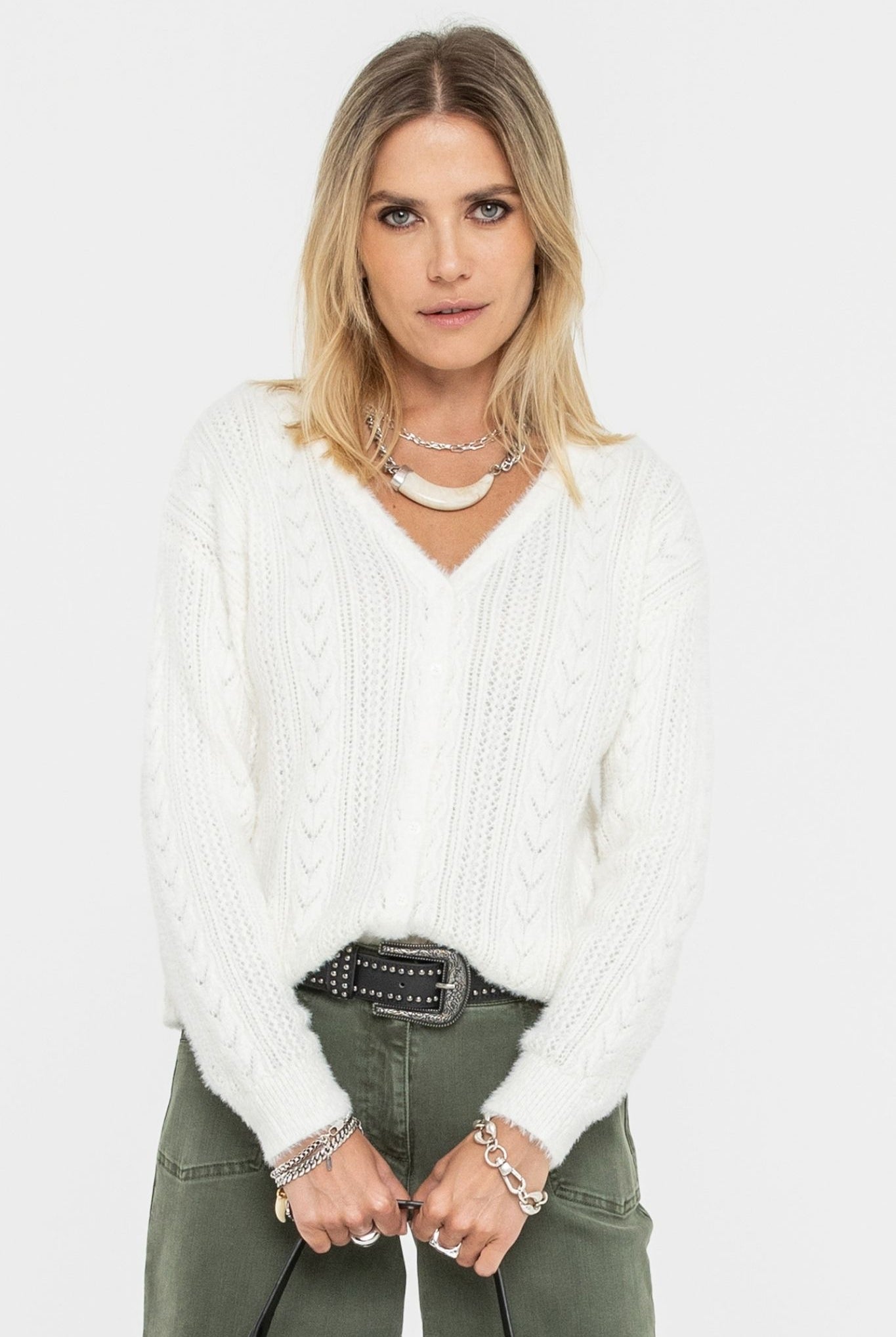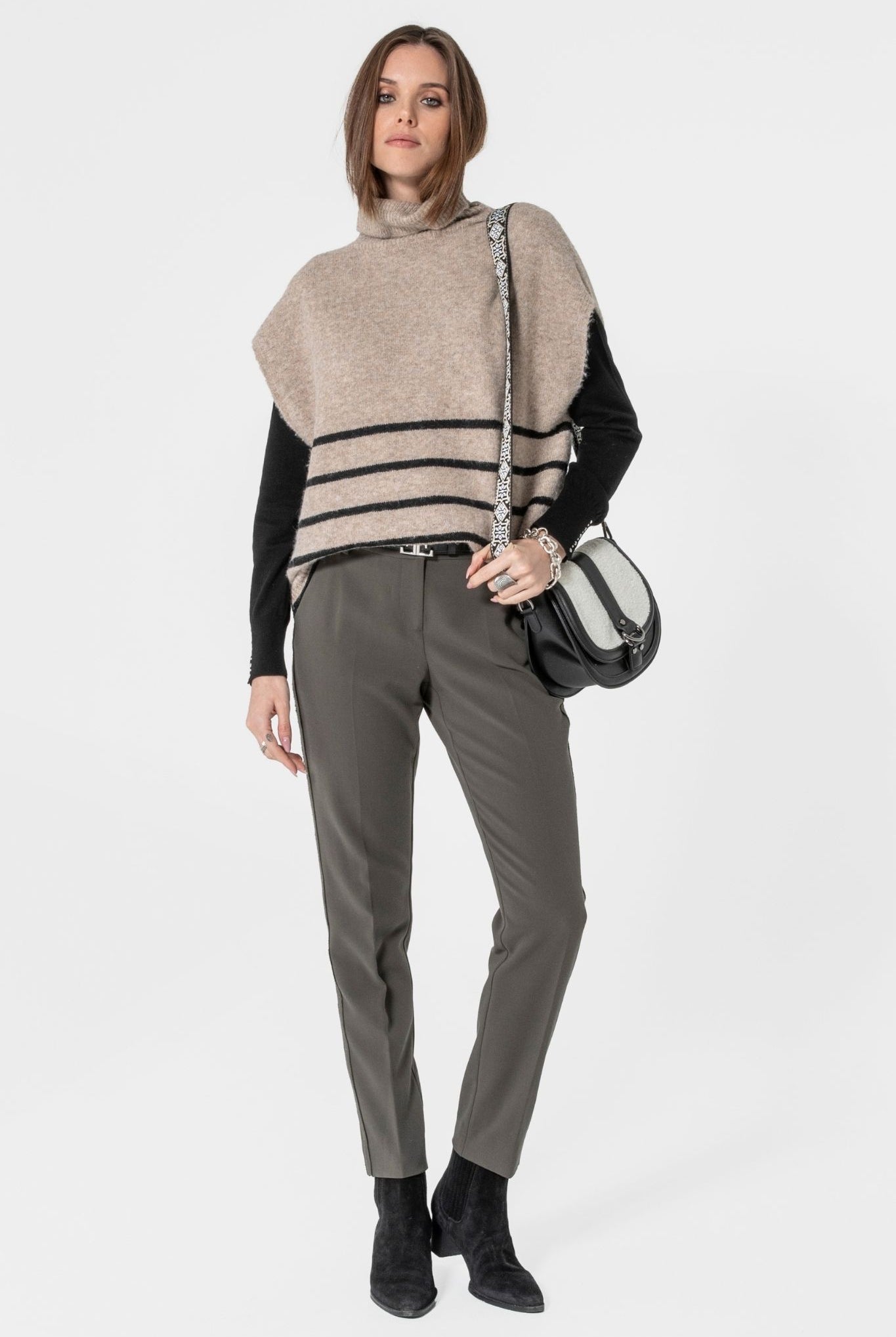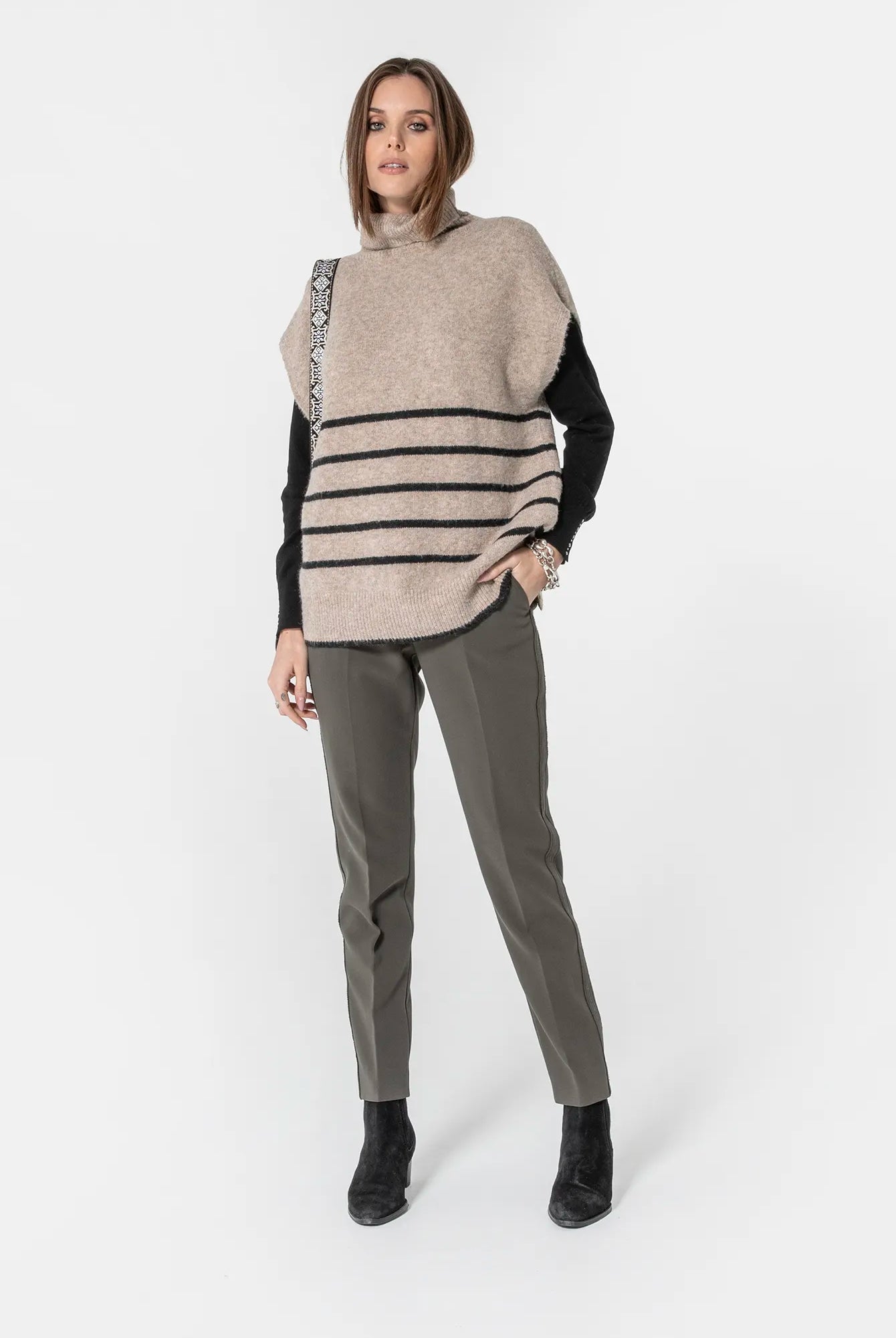During a shopping session with Elora, the makeover is broken down into several steps.
It all starts with analyzing your body shape, to wisely choose the basics for your wardrobe and enhance your look according to your silhouette and style.
Then comes a crucial phase: studying your color profile, to determine the shades that suit you best and will make your look shine.
How do you find out your color profile?
Establishing a woman's color profile is based on analyzing her natural features: her skin type and complexion (in other words: her skin tone), her eye color, and her hair shade.
These three elements help determine if your profile is mainly:
- warm or cool
- light or dark
- soft or contrasted.
What are the basics of color analysis?
Color analysis is so much more than just a collection of colors arranged on a color wheel... It's your personal guide to a customized and harmonious style! Think of it as a treasure or a magic map.
Color analysis aims to determine a chosen, organized set of colors to create a flattering, personalized, and balanced visual effect.
-
The Color Wheel: The Theoretical Foundation
-
This is the essential color wheel (red, yellow, blue, and all their blends). It reveals the secrets of how warm and cool tones interact:
-
It shows which colors are naturally warm (those that evoke the sun: yellow, orange) and which are cool (those that bring to mind the ocean and sky: blue, green).
-
It shows you the complementary colors (those that are opposite and enhance each other, like red, green, or purple, for a vibrant contrast!).
-
-
-
Your Personal Color Palette: The Ultimate Guide
-
This is the most exciting application! Image consulting (color analysis) acts like a tailor-made color selector, revealing your natural beauty type.
-
This range, unique to you, is made up of all the shades that make you say every time: "Wow, this color lights me up!"
-
In short, it's the must-have tool to master the power of colors, whether you're creating a striking design or dressing with dazzling confidence. It's the art of making colors sing together!
Why do we talk about "seasons"?
After analyzing your skin, eyes, and hair, we determine your ideal color range, often called your "season". There are said to be 4 profiles inspired by the seasons: Spring woman, Summer woman, Autumn woman, and Winter woman.
Making the right choice will help you look radiant, refreshed, and full of energy.
The most common method is the four seasons approach, often further refined into twelve seasons for greater precision. What does that mean?
The 4 Seasons method is a color analysis system originally developed by Suzanne Caygill in 1942. Its goal is to determine the color harmony that best enhances a person's natural features (skin, eyes, hair) by associating them with one of the four seasons: Spring, Summer, Autumn, and Winter.
These four seasons are defined by two main criteria: the temperature (warm or cool) and the value/lightness (light or dark/deep) of the colors:
-
Spring (Warm & Light): Warm, light, and luminous colors.
-
Characteristics: Skin with golden or peach undertones, golden blonde/light red/warm light brown hair, bright and light eyes (blue, green, light hazel).
-
Ideal palette: Coral, salmon, light turquoise, golden yellow, mint green.
-
Metals: Yellow gold, copper.
-
-
Summer (Cool & Light): Cool, light, and soft/powdery colors.
-
Characteristics: Skin with pink or bluish undertones, ash blonde/light ash brown hair, light eyes (blue, gray, green).
-
Ideal palette: Sky blue, lavender, powder pink, pearl gray, aqua green.
-
Metals: Silver, white gold.
-
-
Autumn (Warm & Dark/Deep): Warm, rich, and earthy colors.
-
Characteristics: Skin with golden, peach, or olive undertones, red/auburn/warm brown hair, dark or green/hazel eyes.
-
Ideal palette: Burnt orange, olive green, burgundy, mustard, ochre, and warm brown.
-
Metals: Yellow gold, bronze.
-
-
Winter (Cool & Dark/Deep): Cool, intense, and contrasting colors.
-
Characteristics: Strong natural contrast, very fair (porcelain) or dark skin with cool undertones, black/dark brown/salt-and-pepper hair, intense eyes (steel blue or violet, dark brown, emerald).
-
Ideal palette: Black, pure white, bright red, navy blue, fuchsia, pine green.
-
Metals: Silver, white gold.
-
Evolution: The 12 Season Theory
The four-season method is often refined into a 12 Season (or sub-season) classification, which takes into account a third dimension: the saturation (or purity/brightness) of the color.
Each base season is then divided into three profiles (for example: Bright Spring, Warm Spring, Light Spring), allowing for a more precise and personalized analysis.
How does color analysis apply to clothing? Is it true that ELORA's Fashion Consultants are color analysis experts?
Have you ever done a color analysis test to discover your own ideal palette?
Color analysis is an essential tool, mastered by Elora's Fashion Consultants, so they can guide you in a personalized and expert way towards the clothes that will make you shine. They're encouraged to use this expertise to turn a simple sale into a true image coaching session. It's a fantastic added value!
-
An Image Consulting Approach: Elora's Fashion Consultants (who often work in home or digital sessions) are trained to offer a complete image consulting service, including color analysis.
-
A Tool to Enhance: The brand's goal is to support clients in their clothing choices by highlighting their figure and colors to boost their confidence. Color analysis is therefore an integral part of their consulting mission.
-
Ongoing Training: Elora provides personalized support and regular training to its Fashion Consultants to help them develop their skills, including these styling techniques.
Let's dive into the wonderful world of color analysis for clothing!
Color Analysis for Clothing: Your Secret to a Healthy Glow
Applying color analysis to clothing is very practical and brings spectacular benefits: it gives you an instant glow!In practice, how do you determine your tone: Warm or Cool?
This is the crucial step. Several tests can help:
-
The vein test: Look at the veins on the inside of your wrist in natural light.
-
If they appear more blue-violet, you probably have a cool undertone (Winter or Summer).
-
If they appear more greenish, you have a warm undertone (Spring or Autumn).
-
-
The jewelry test: Hold both silver and gold jewelry near your face, one after the other.
-
If silver brightens your complexion, you’re probably a cool season.
-
If gold flatters you more, you belong to a warm season.
-
-
Observing your complexion:
-
Cool complexion: Tends to blush easily, with blue, gray-olive, or pink undertones.
-
Warm complexion: Golden, peach, honey, or copper undertones; tends to tan easily.
-
The practice of Draping
A highly reliable tip, often used by image consultants, is draping (or the fabric test). This involves placing different fabrics in pure colors (warm, cool, light, dark, vibrant, soft) under your face, without makeup and in natural light, to clearly observe:
-
Colors that illuminate the complexion, soften dark circles, and minimize skin imperfections.
-
Colors that dull the skin, accentuate shadows, and harden features.
Once your season is determined, you have a palette of ideal colors for your outfits, makeup, and accessories (silver/gold jewelry).
And for those who can't live without black?
Black, although universally seen as an elegant and versatile color, doesn't suit everyone in color analysis. Here's what you need to know:
Black: a bold and contrasting color
-
It belongs to the neutral shades, but it's also a very intense color that creates strong contrast.
-
It is therefore ideal for "Winter" profiles, who are enhanced by cool, contrasting colors.
-
For others (Spring, Summer, Autumn), it can harden features, dull the complexion, or create visual imbalance, especially when worn close to the face.
Alternatives according to your season
-
Spring: prefer warm brown, navy blue, or golden beige.
-
Summer: choose pearl gray, pastel blue, or powder pink.
-
Autumn: go for chocolate, khaki, ochre, or rust.
-
Winter: alternate with midnight blue or charcoal gray to vary the contrasts.
Tip: If you love black but it doesn't flatter you, wear it preferably on the bottom (pants, skirt, shoes, or boots) and balance your look with accessories or makeup in your ideal colors.
And that's the magic of color analysis!
Once your Season is revealed, you know your profile and have a truly personalized tool to enhance your appearance.
By choosing colors that suit you, based on their warm or cool profiles, you enhance your complexion, eyes, and hair with harmony and radiance. No more random purchases: every ready-to-wear piece becomes your ally, every accessory the perfect finishing touch.
This isn't just another color theory—it's a simple, playful, and powerful approach to reveal your natural style and shine every day!
Discover our entire women's ready-to-wear collection on our website.
